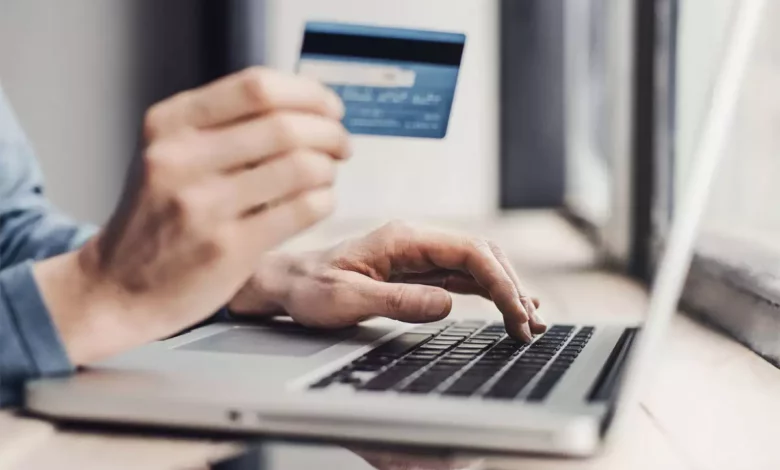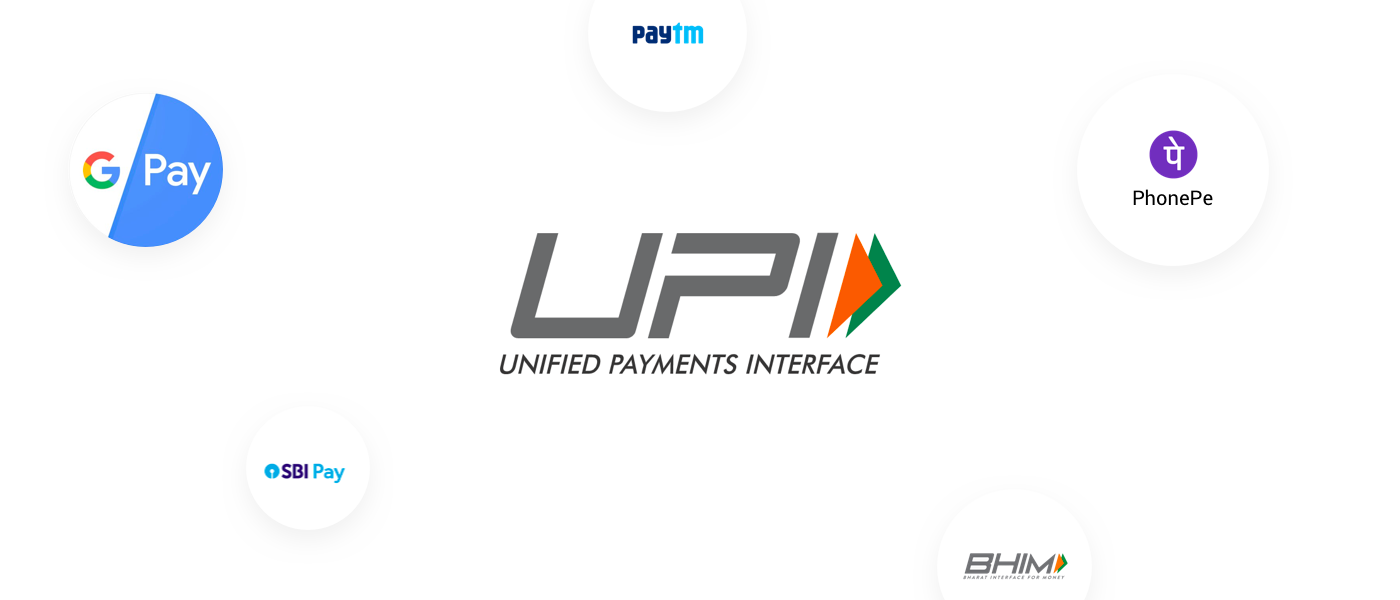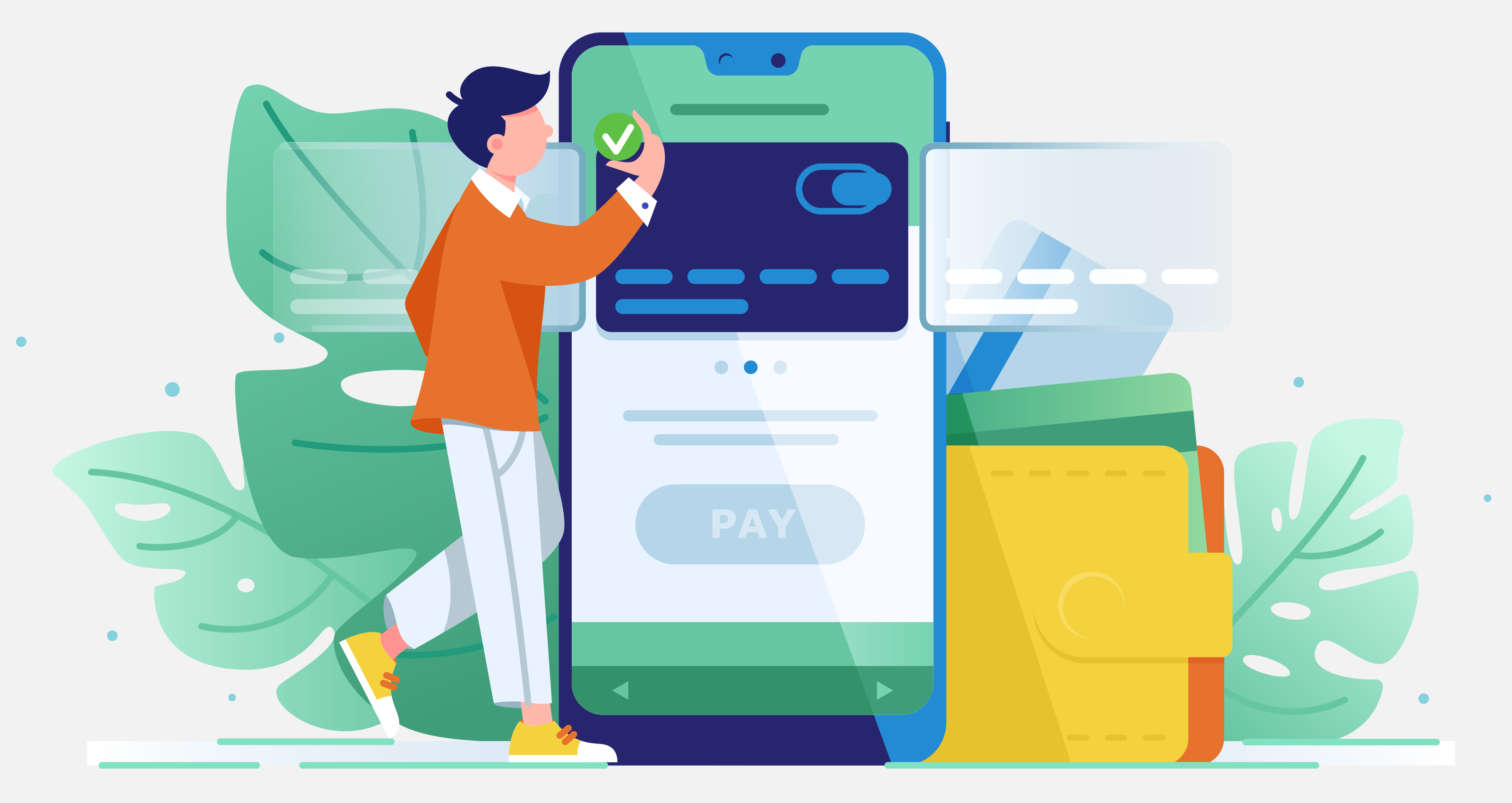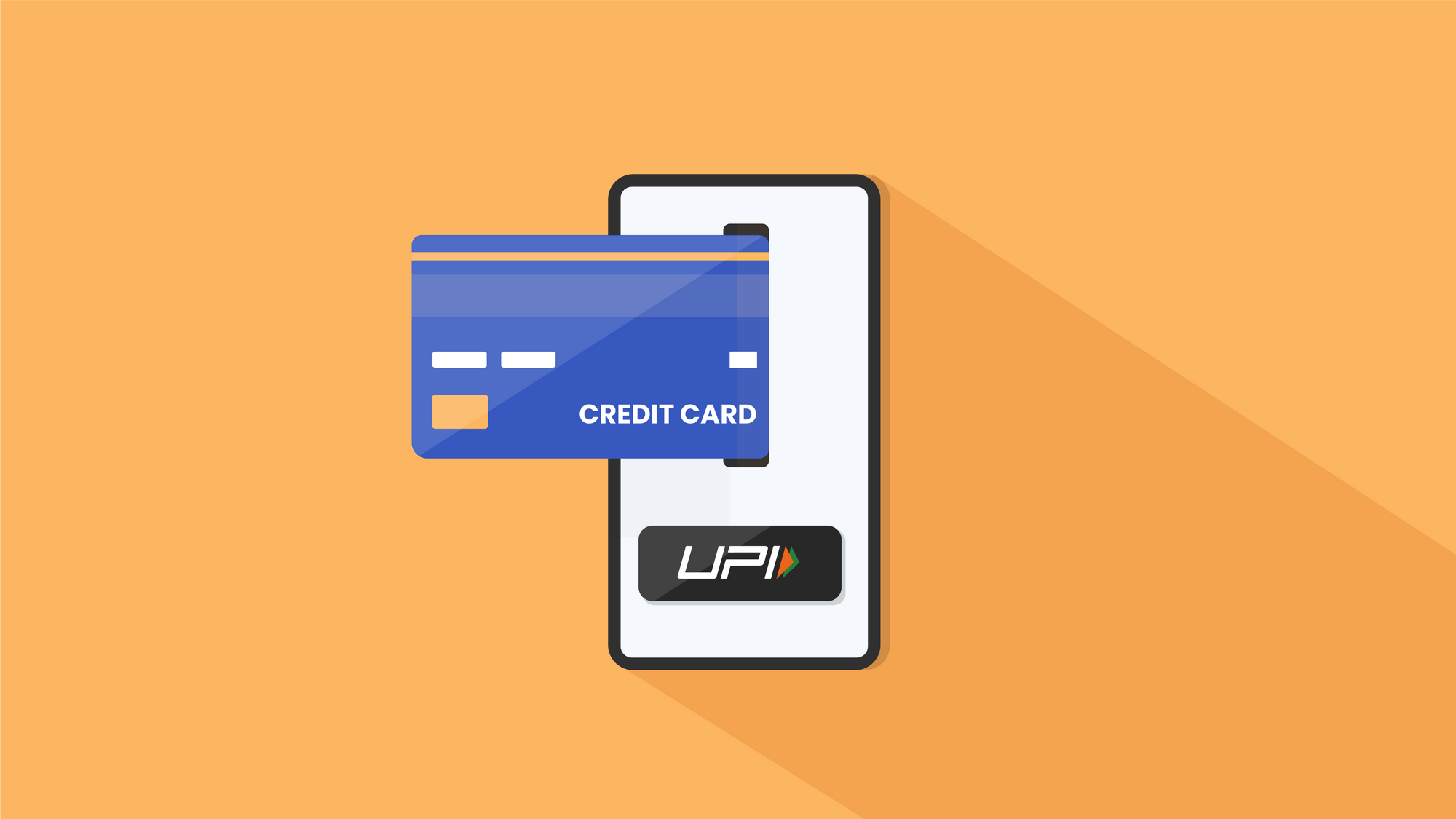Recognising the ramifications of tying a credit card to a UPI, Is it something we should be doing in 2022?

Recognising the ramifications of tying a credit card to a UPI, Is it something we should be doing?
According to the Reserve Bank of India, credit cards can now be linked to UPI. The most common payment method in India is UPI (Unified Payments Interface), allowing users to conduct real-time bank transfers by linking their savings or current accounts with debit cards.
ACCORDING TO RBI DATA, the UPI platform now has over 260 million (26 crores) unique users and five crore enterprises. In May 2022, UPI processed 594.63 crore transactions worth a total of Rs 10.40 lakh crore.
According to the circular, credit cards issued on the RuPay Network can currently be linked with UPI, which means that shortly, you will be able to connect your credit card account with UPI and make payments at UPI-enabled merchant QR codes without having to carry your credit cards physically.
The main benefit of UPI is that it is widely accepted across the country, as businesses can take payments with a QR code or a registered mobile number. In contrast, credit cards require PoS (Point of Sale) terminals.
To make payments via UPI, you’ll need a UPI-enabled mobile app. A one-time password is provided to your registered cellphone number after you link your bank account and enable one-time authentication for PIN setup with a debit card.
Each time you make a payment, scan the QR code, select your bank account, and approve with your PIN, eliminating the need to carry your debit or ATM card.
You must currently carry your credit card, swipe it on a PoS machine, enter your PIN on the device, and finish the purchase.
Accepting payments by credit card and debit card swipe necessitates the purchase of a point-of-sale (POS) machine, which is not cheap. Accepting payments necessitates MDR and a settlement delay of T+2 or longer.
UPI accounted for more than 60% of all non-cash transactions in FY22, according to a joint study by PhonePe and the Boston Consulting Group. PoS transactions, on the other hand, only made up 5% of total transactions. As a result, it’s evident that, if properly implemented, this effort has the potential to improve credit card acceptance and adoption significantly.
Credit on UPI is not a novel notion; several FinTech companies, such as LazyPay, Jupiter Edge, and Freo Pay, allow users to pay with credit at any UPI-approved merchant QR code.
They provide you with a minimum credit limit and a 30-day grace period to clear your debt. Similarly, PostPe by BharatPe is another platform that allows customers to pay any of their partnered businesses with their credit limit.
UPI’s popularity stems from its ease of use. Users can now link their credit cards to UPI, allowing for more widespread adoption of fast and easy payments for even minor transactions without needing a point-of-sale terminal.
Furthermore, while purchasing with a credit card has benefits such as earning reward points on your purchases and a credit-free period of up to 45 days, it can also accrue up to 48 per cent annual interest on the outstanding balance if not correctly handled.
While this is an intriguing start, there are still a few unsolved questions.
- Because there is no fee associated with UPI payments, merchants prefer to accept them. However, it’s unclear how credit card companies can recoup their capital costs and how the current infrastructure will allow this if credit cards are accepted through UPI Payments.
- Credit cards, moreover, are a sort of soft loan or short-term debt that must be carefully managed. Credit rotation and extra debt reinvestment in investing, trading, and other activities are possibilities.
- It has the potential to significantly raise UPI volumes and average order amounts, which are far more significant in the case of credit cards than UPI, but the simplicity of payments may lead to consumer overspending and a debt trap for many people.
- A four- or six-digit PIN is required for all UPI transactions, whereas credit cards require a PIN for offline purchases and an OTP for online purchases. Payment authentication is unknown, which could lead to an increase in fraud cases if the necessary infrastructure and standards are not in place.
- Because the feature is being rolled out to RuPay, India’s domestic payment method, it would be interesting to observe if this gives RuPay a competitive advantage over global competitors like Visa and Mastercard and if this increases RuPay’s market share.
Here’s how to do Google Pay-credit card linking for utility payments

Making online payments is one of the most straightforward tasks, but only if you understand how. Several UPI (Unified Payments Interface) apps are utilised for this, including Google Pay, PhonePe, and Paytm. Making payments has grown more accessible, simpler, and faster with the help of these apps, and all by following a few simple steps. You have to scan the QR code or enter the recipient’s mobile number, then enter the amount and UPI pin, and you’re done. The Reserve Bank of India (RBI) has permitted customers to link their Rupay credit cards to the UPI platform to provide more convenience to users and expand the scope of digital payments.
Because Rupay Credit Cards have been linked to the UPI network, users can now make UPI payments using their Rupay Credit Cards. Governor Shaktikanta Das of the Reserve Bank of India announced this during the RBI Policy Meeting in June. “The Rupay credit cards will be the first linked to the UPI platform. This would give users more convenience and broaden the reach of digital payments. “In a statement, the RBI stated.
It should be emphasised that, while the RBI has announced Rupay Credit Card compatibility, it is now up to the UPI payment apps to implement it. According to research, most UPI payment applications presently allow users to link their Mastercards and Visa Cards to the app; however, you cannot use the credit card to transfer money or make payments at local stores at this time. You can only use the credit card to pay bills and utility costs, such as recharging your phone or paying your electricity bill.
If you’re a Google Pay user who wants to attach your credit card to the app, these are the steps to take.
Integrate your credit card with Google Pay: Here’s how to do it:

1st Step:
Open Google Play on your mobile device.
2nd Step:
Tap on your profile photo, then Bank Accounts and Cards, and finally Add Card.
3rd Step:
Enter the card number, expiration date, CVV, and the cardholder’s name and billing address. After that, tap Save.
4th Step:
Accept the terms and restrictions set forth by the issuer, and Google Pay will call your bank to validate your Card.
5th Step:
Decide how you’ll verify. You will be prompted for extra authentication through OTP, which you can enter manually or have auto-read.
6th Step:
Tap Activate next to your new Card’s payment method listing. Enter the one-time password you were given.
7th Step:
Enter the one-time password you were given. A confirmation will appear.
Step No. 8:
Enter the one-time password you were given. A confirmation will appear.
Vijay Shekhar Sharma, the CEO of Paytm, believes that the RBI’s decision to link credit cards to UPI is a game-changer.
The RBI will initially allow RuPay credit cards to be linked to UPI.
The Reserve Bank of India (RBI) declared a historic shift in UPI payments, bringing a million smiles to the faces of ordinary people who are already overloaded with bills and can’t merely UPI with credit cards! The decision has sparked a lot of excitement among banks. They are, however, awaiting clarification on MDR (Merchant Discount Rate).
The announcement seemed to have delighted Paytm CEO Vijay Shekhar Sharma. The move by the RBIs, he says, is a game-changer. Paytm is presently one of the most popular UPI apps on the market. This is the happiest news for India’s fintech industry.
Until now, UPI was only available for debit cards linked to savings banks or current accounts. According to RBI Governor T Rabi Sankar, the new bank policy is intended to “give clients a wider choice of payments.” This service will be limited to RuPay credit cards at first. Those who have a Mastercard or a Visa will have to wait. According to a statement made by the RBI, this capability will be accessible soon as the essential system (now under development) is completed.
Tamal Bandyopadhyay sees this as a significant step forward in the digital realm.
“Rupay Credit Card is linked to @UPI_NPCI. Yet another big leap in the digital space. It’s all happening in the payments space in India— most happening market, globally @RBI.”
Meanwhile, Asher Grover, the previous CEO of BharatPe, added his two cents.
“Linking the credit card on UPI is an excellent move by RBI. Unfortunately, it’ll be a non-starter unless issuers, especially banks, understand that merchants will not pay MDR. So there is no interchange to be made on UPI. Dukandar ab customer credit ke paise nahi dega nahi dega nahi dega”
The UPI platform now has over 26 unique users and five merchants. According to the Reserve Bank of India, 594.63 crore notable transactions were completed in May 2022, totalling Rs 10.40 lakh crores! With the UPI-Credit Card connection, this is just going to get bigger.
The Importance Of UPI-Credit Card Linkage And Why MDR Charges Will Determine Success
The Reserve Bank of India (RBI) has stated that credit cards will be able to be linked to the Unified Payments Interface (UPI), which might be revolutionary (UPI). While the shift is expected to increase credit card usage, numerous doubts remain about how it will be implemented, particularly with the Merchant Discount Rate (MDR).
The MDR is the fee merchants pay to card-issuing banks when they make a card transaction.
Because credit cards contain a 2-3 per cent MDR, the MDR has been an essential source of revenue for credit card issuers. The MDR fee for using debit cards on the UPI, on the other hand, was abolished in 2020.
There are concerns about the business model because it is unclear whether the MDR would be charged for using credit cards through the UPI.
A Determining Factor: MDR
The business model of the credit card industry is based on MDR and interchange, which covers the 45-day interest-free period, the cost of servicing the merchant and transaction fraud, among other things. Prime Venture Partners’ managing partner, Sanjay Swamy, explained.
As a result, how the business model will operate and who will pay must be determined.
“How will merchants join up for this if the merchant pays?” If retailers are responsible for the fees, Swamy cautioned, “we must keep in mind that merchants are not always willing to do so.”
“If there is no MDR, it needs to be considered if there is even a business model,” he added.
Zero MDR charges are one of the reasons for the UPI’s success. Rupay debit cards have no MDR charge, while its credit cards have lower MDR rates than Visa and Mastercard.
“Thus, if UPI via credit card has any MDR (vs no MDR on debit UPI), we remain sceptical about the product’s penetration outside of the existing merchant base that employs POS devices (and pays MDR on card transactions),” Goldman Sachs wrote in research.
Despite all odds, credit card adoption is expected to rise.

It’s unclear whether the MDR regulations for UPI payments using credit cards will differ from those for regular credit card purchases. According to the Goldman Sachs research, MDR on credit card usage via UPI might be regulated at a lower rate to encourage uptake, particularly for transactions with smaller ticket sizes.
According to the research, credit card volumes increased by 15% yearly to $130 billion in FY22, up from $97 billion in FY20. Without UPI integration, it is predicted to expand at a 22 per cent CAGR to $285 billion by the end of FY26.
However, if MDRs align with current credit card MDRs, every 5% increase in credit card transaction volume due to UPI integration will correspond to $38 billion in new annual credit card volumes, or $760 million in increased MDR pool, according to the paper.
Swamy believes that because the facility will first be available just for Rupay cards, it will be a suitable way to test the service because the credit card sector is a very “regulated market.” He also stated that since Rupay is the first to issue Rupay cards, more public banks may follow suit.
“…Rupay can also be virtual rather than physical, such as a Rupay credit card linked to a Visa card. “However, I believe it will begin with Rupay and then spread to other cards,” he predicted.
Meanwhile, Citi Research stated in a report that the move to integrate credit cards with UPI would result in increased credit card acceptance.
“While merchant uptake will need to be monitored, given UPI-QR code penetration (50 percent) vs. PoS device penetration (5%), this approach (when extended beyond Rupay) can dramatically increase acceptance networks for credit cards (both virtual and physical),” it stated.
Integration Creates More Innovation Possibilities
In the following days, integrating UPI with credit cards could lead to even more developments.
“We need to think beyond credit cards.” The beauty of UPI is that it may be used for various credit types. Examples include low-value UPI line of credit, B2B credit, working capital credit, and so forth. “I’d like to see a little more receptivity to these kinds of chances,” Swamy added.
The credit disbursal procedure can be made more accessible with UPI integration, as UPI has become one of the country’s most comprehensive digital payment systems. Different sorts of lenders can dispense credit at a minimal cost by integrating.
The use of UPI is becoming more widespread in the country. In May, UPI transactions increased from 461.7 crores in January to 595 crores totalling INR 10.4 lakh crores. The UPI ecosystem, dominated by Google Pay, PhonePe, and Paytm, now has a new competitor: Meta-owned WhatsApp Pay.
Meanwhile, RBI Deputy Governor T. Rabi Sankar stated Wednesday that pricing for the UPI-credit Card linking would be established later.
“We’ll have to see how the pricing of it works out, since pricing is something that the banks and the system organisations will have to do.” We’ll introduce the setup at this point. “We’ll see how pricing goes,” Shankar said.
For the time being, the RBI is unconcerned with price, but the MDR charges will significantly impact the integration’s outcome. If implemented successfully, it has the potential to enhance not only UPI usage but also credit card acceptance in the country.
Asher Grover offers his thoughts on tying credit cards to UPI. ‘The RBI made a great move, however…’
Asher Grover agreed with the thoughts about the merchant discount rate (MDR). “Merchants will not pay MDR,” stated the former BharatPe co-founder and Shark Tank India judge.
Former BharatPe founder Ashneer Grover is well-known for being a severe critic, yet he is also an inspiration to many Shark Tank India candidates.
Asher Grover, a Shark Tank India judge and former BharatPe co-founder, has praised the RBI’s decision to enable credit cards to be linked to the Unified Payments Interface (UPI). However, he has worries about the merchant discount rate (MDR).
“The RBI’s decision to link credit cards to UPI is fantastic. Unfortunately, unless issuers, particularly banks, recognise that merchants will not pay MDR, it will be a non-starter. As a result, there is no UPI interchange, “Ashneer Grover posted in a tweet.
“Merchants are averse to paying for client credit.”
In exchange for payment services, MDR is the price that merchants and shopkeepers pay to banks and service providers.
UPI and RuPay debit cards are subject to zero-MDR, which means no fees are imposed on these transactions, according to a rule that took effect on January 1, 2020. It’s one of the main reasons why merchants throughout the country have switched to UPI.
The central bank said on June 8 that credit cards could be linked to UPI. Before that, UPI could only be connected to a customer’s bank account and debit card for any transaction.
RBI Governor Shaktikanta Das announced during his monetary policy speech.
“UPI makes transactions easier by connecting customers’ debit cards to their savings or current accounts. It is currently intended to allow credit card linkage on the UPI network, with RuPay credit cards being the first to be linked “he stated
“This will give users with even more ease and expand the reach of digital payments.”
While the RBI has announced that the connection of RuPay cards will be the first Step, followed by other card networks such as Visa and Mastercard, more clarity on MDR is still needed.
According to Goldman Sachs, linking credit cards to UPI platforms will benefit Paytm; the company’s stock price might rise by 72 per cent.

On June 8, 2022, the central bank authorised credit cards to be linked to the unified payments interface (UPI), beginning with Rupay cards.
The Reserve Bank of India’s (RBI) decision to link Credit Cards (CC) with UPI (Unified Payments Interface) will benefit new-age companies like One-97 Communications (Paytm), according to a note released on Monday by global brokerage company Goldman Sachs.
On June 8, 2022, the central bank authorised credit cards to be linked to the unified payments interface (UPI), beginning with Rupay cards. Currently, UPI supports transactions by connecting savings or current accounts via a mobile app.
“It is suggested to allow credit card connection to UPI,” RBI Governor Shaktikanta Das said in a statement announcing the regulatory changes and the bi-monthly policy review.
Paytm has a Buy rating from Goldman Sachs, which sees a 72 per cent potential upside in the stock. It expects a beneficial impact on the company’s payments vertical, with Paytm’s BNPL (Buy Now Pay Later) product potentially becoming more competitive.
In FY26, the brokerage expects lending to account for 16 per cent of the company’s revenue or roughly 6-7 per cent from BNPL. It feels the use case is still valid for BNPL, particularly on platforms like Paytm, where the convenience is greater (one-click payment).
According to Goldman Sachs, adding credit cards to UPI might enhance credit card adoption and broaden the scope of digital payments in India.
The small print of the implementation will determine the potential for monetisation, and there is also the possibility of various target universes for UPI and credit card payments, according to ICICI Securities.
According to the report, the critical questions are: What will be the charges for UPI in CC, given that UPI currently has no charge? Can the entire point-of-sale (PoS) infrastructure be jeopardised if Visa/Mastercard is gradually enabled and if successful adaption is achieved?
Paytm’s stock fell over 4% to a day’s low of Rs 578.5 per share, compared to a 3.2 per cent drop in the BSE Sensex at roughly 02:00 PM. The counter has been corrected by more than 73% from its issue price of Rs 2150 per share and more than 70% from its listing price of Rs 1950 per share.
Unanswered MDR questions
Though numerous benefits exist, many questions about credit card charges and merchant discount rates have been raised (MDR). “How the pricing will work out, that we will have to watch as we go on,” RBI deputy governor T Rabi Sankar said at a press conference when asked about pricing. Merchants are not currently charged for utilising UPI, but MDR costs apply to credit cards. This means merchants pay banks a set amount for each credit card transaction.
“Since merchants are not charged an MDR for UPI payments, it’s unclear how credit card issuers can cover their cost of capital and how the underlying infrastructure will sustain this,” said Deepti Sanghi, Co-Founder and CEO of Kodo, a fintech start-up. In a few years, we’ll have 10x merchants accepting credit cards in India, according to Shashank Kumar, Razorpay’s CTO and co-founder.
Shashank Kumar also stated in a series of tweets that businesses will be required to consent to accept credit cards via UPI and bear the MDR, particularly in the in-store offline environment. “Given how many merchants have been accustomed to accepting UPI payments at no cost, that won’t be easy.”
Also, how soon can banks put this into practice and maintain momentum? Banks have been catching up with compliances and developments on multiple fronts, like recurring, tokenisation, and now UPI, and this will become yet another, he noted.
Apart from this, there are uncertainties over whether UPI cards would work on top of existing card rails or bypass them, as well as when MasterCard and Visa will join the UPI platform, as the RBI stated that RuPay credit cards would be linked to the platform first.
According to Pranjal Kamra, CEO of Finology Ventures, this credit card link will allow users to make UPI payments with the benefit of a 30-day interest-free credit if there isn’t enough balance in the bank account.
According to Kotak Institutional Equities, a new arrangement with 181 million UPI QR codes through the network provider indicates that there may be pushback if the flow shifts more towards credit over traditional UPI. According to analysts, Bharat QR codes currently take all payment forms, but their use is modest.
Some facts about UPI you should know
![]()
- There are currently about 26 crore UPI users.
- MDR fees range from 2-2.5 per cent.
- PhonePe says UPI adoption would increase from 35% in FY 21 to 75% in the next five years.
- In terms of volume, UPI transactions are currently 9x that of credit and debit card transactions in FY22.
- UPI handled over 594 crore transactions worth Rs 10.4 lakh crore last month.




